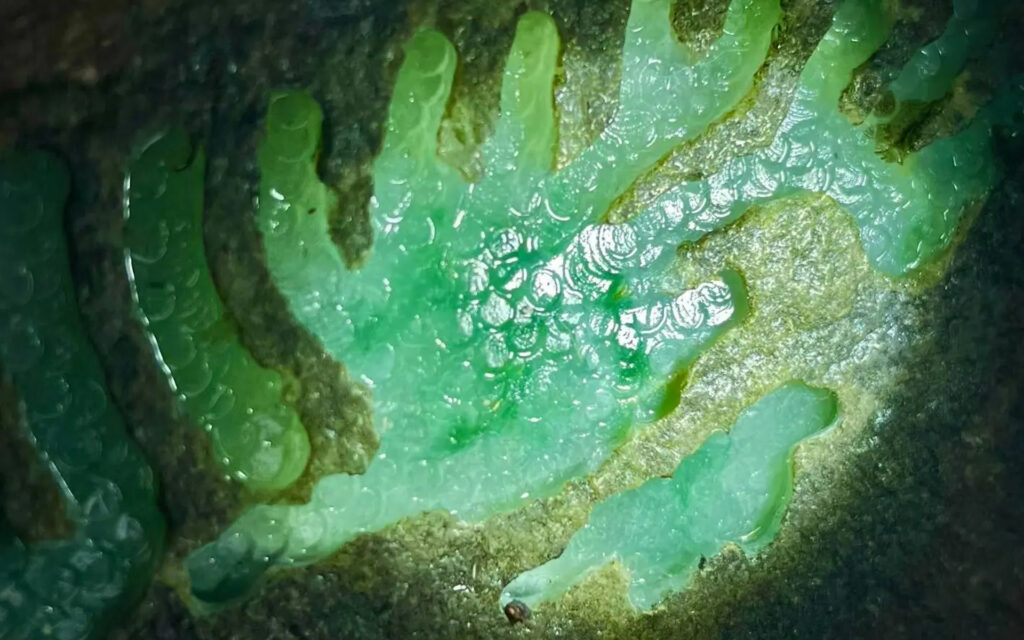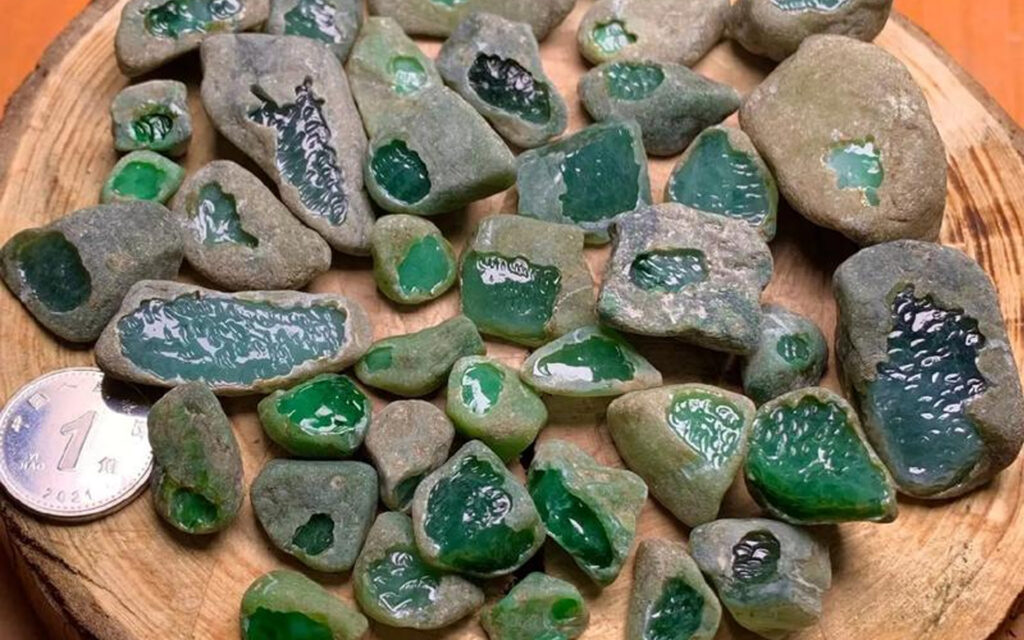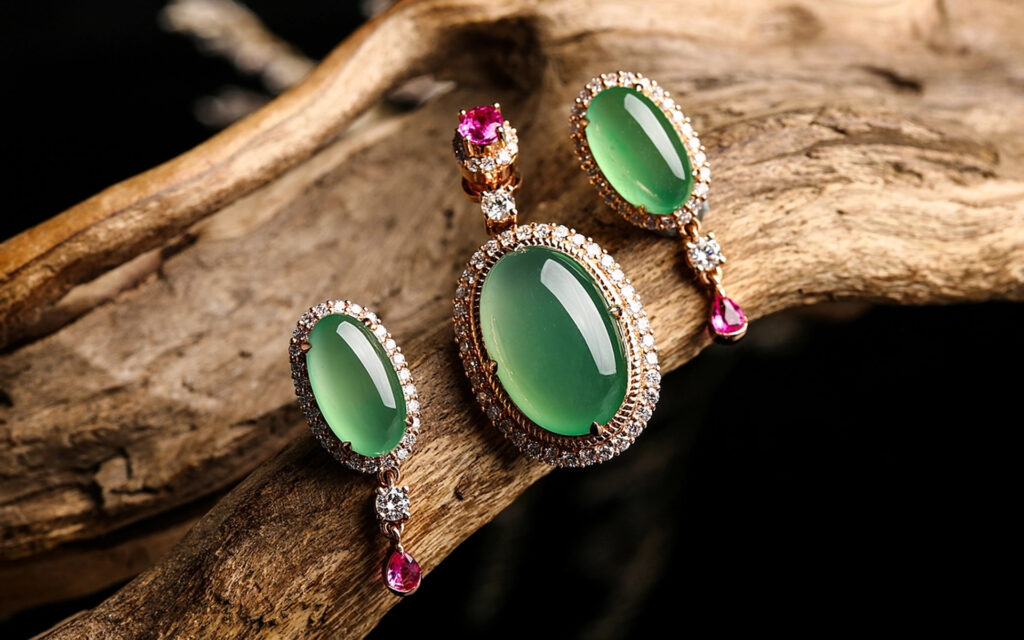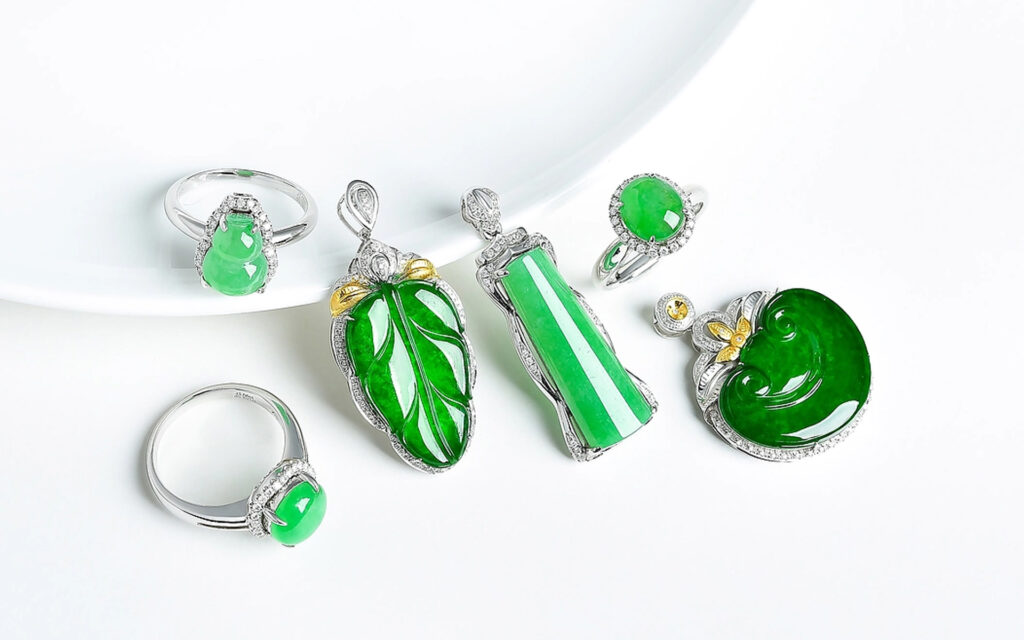Jadeite, hailed as the “King of Jade,” is a cryptocrystalline to microcrystalline aggregate primarily composed of jadeite minerals in nature. Its main constituent is sodium aluminum silicate, formed through billions of years of geological movements and forged under extreme environmental conditions. This precious gem, combining the luster of a gemstone with the warmth of jade, has long symbolized auspiciousness, character, and wealth in Eastern culture, embodying profound cultural heritage and artistic value. So, how should jadeite rough be maintained? How can one distinguish genuine jadeite from counterfeits?

I. How to Care for Cut Jadeite Rough?
A dreamer dedicated to spreading Chinese jade culture once said within the jadeite trade: “Even immortals struggle to judge an inch of jade.” Some attribute success to discernment, others to luck. Selecting fine jade requires accumulating extensive experience. Today, many jadeite accessories in the market are crafted from raw jadeite stones. Numerous jadeite merchants source raw stones from jadeite markets, then process them into various jewelry pieces according to customer preferences. So how should cut jadeite stones be maintained? Here are a few tips.

01 Apply Maintenance Oil
For routine care, coat the surface of jadeite rough with vegetable oil or specialized jade maintenance oil to preserve the integrity of its outer skin. Only when the outer layer remains undamaged can the inner rough be well-preserved. Avoid contact with hard objects to prevent cracks that compromise texture.
02 Regular Hydration
Jadeite rough stones tend to lose moisture over time, leading to dullness. Regular hydration is essential—soak them in clean water for 1-2 days every few months. Even after peeling, jadeite rough stones should be periodically soaked in water. After cutting, the most convenient and effective storage method is to wrap the jadeite rough in a clean white cotton cloth and place it in a location that is neither dark nor damp. However, note that jadeite rough left unused for extended periods will lose moisture. Therefore, every few months or at least every six months, remove it and soak it in clean water for one to two days to replenish moisture.
03 Indoor Storage
Jadeite rough must be stored indoors and should never be left outdoors. Rainwater contains acidic substances that can alter the rough’s structure. Prolonged outdoor exposure to weathering causes the rough to lose moisture, resulting in a dull luster and diminished value. Outdoor exposure typically subjects jadeite to weathering or acid rain, causing surface erosion and potential cracking. Indoor storage effectively prevents this damage. Additionally, indoor placement shields the stone from intense heat and direct sunlight, preserving its moisture, luster, and preventing cracking. However, once jadeite rough is placed indoors, avoid moving it frequently. The rough stone has an outer crust and is a fragile item. Regular handling often causes internal cracks to form within the jadeite.

II. Struggling to Tell Real Jadeite from Fake? Master It in Four Simple Steps!
Faced with the complex and ever-changing jadeite market, many inexperienced consumers struggle to distinguish between genuine and counterfeit pieces. Today, Brother Hua shares four methods to help you better identify authentic jadeite.
01 Observe the Color
Experienced connoisseurs can often determine a jadeite’s authenticity at a glance by examining its color. Genuine jade features evenly distributed, natural-looking coloration with a clean appearance. Even pieces with impurities or dark spots exhibit a natural distribution pattern. Fake jade, often resin-filled and dyed, displays an unnatural, dull green hue. If the fake has been acid-washed, the white areas appear artificial—like bleached fabric.
02 Appearance
Genuine jade appears translucent and luminous. Under light, its internal texture and natural patterns are visible, unlike the artificial appearance of counterfeits. Genuine jade is polished, feeling cool, smooth, and silky to the touch. Fake jade, being resin-filled, appears somewhat like solid glue—hazy and lacking transparency. Upon close inspection of its edges, the resin texture becomes visible, with no genuine jade patterns discernible.

03 Listen to the Sound
Genuine jade produces a clear, resonant ring with a lingering tone when lightly tapped with metal. Counterfeit jade, having undergone high-temperature acid washing that damages its internal structure, emits a dull, muted sound when struck.
04 Check the Authentication Certificate
The most direct, scientific, and accurate method is to send the piece to a professional testing institution for scientific instrument analysis. Therefore, when purchasing jadeite, always request the seller to provide a relevant jadeite appraisal certificate. A jadeite jewelry appraisal certificate will contain detailed information about the piece. Genuine jadeite certificates will state: “Jadeite (Type A).” Certificates for treated B+C jadeite will specify “Jadeite (Treated). Each jadeite certificate bears a unique serial number corresponding to a single piece of jadeite.
The preservation and authentication of jadeite rough stones blend science and artistry, requiring adherence to objective mineralogical principles while relying on the connoisseur’s accumulated experience. Collectors are advised to adopt a “preventive maintenance” approach, regularly submitting raw stones to professional institutions for non-destructive testing while enhancing their identification skills through authoritative appraisal training. With the dual safeguards of technology and tradition, this green treasure gifted by nature will sustainably pass on its cultural and economic value.